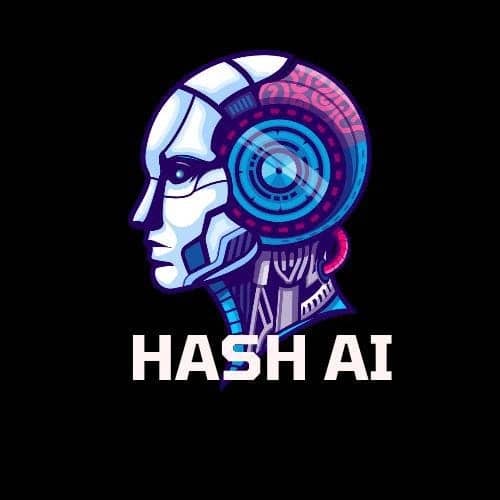订阅 wiki
Share wiki
Bookmark
Hash AI
Hash AI
引言
Hash AI是一个去中心化的人工智能平台,它将区块链技术与人工智能能力相结合,以创建一个用户拥有的AI生态系统。该平台旨在提供可访问的AI工具,同时允许用户保持对其数据的所有权并参与网络的治理 [1]。
概述
Hash AI的开发是为了解决大型公司对人工智能技术日益增长的中心化问题。该平台利用区块链技术创建一个去中心化的基础设施,用户可以在其中访问AI工具,同时保持对其数据的控制。这种方法旨在普及AI能力,同时确保用户的隐私和数据主权 [1]。
该平台以集体所有权为原则运作,用户可以通过原生$HASH代币为网络的发展和治理做出贡献。通过在用户之间分配所有权和控制权,Hash AI致力于创建一个更公平的AI生态系统,使所有参与者受益,而不是将权力集中在少数大型实体手中 [1]。
Hash AI与各种区块链网络集成,以提供互操作性和可扩展性。该平台的架构旨在支持广泛的AI应用,同时保持处理用户请求的安全性和效率 [1]。
产品
Hash AI提供多种核心产品,旨在为用户提供可访问的AI工具:
- Hash Chat - 一个对话式AI界面,允许用户通过自然语言与AI模型交互。聊天功能支持各种用例,包括内容创建、研究协助和问题解决 [1]。
- Hash Image - 一个AI驱动的图像生成工具,使用户能够根据文本提示创建视觉内容。该工具支持创意应用、设计工作和视觉内容创建 [1]。
- Hash Voice - 一个语音合成和识别系统,允许与AI进行自然的语音交互和语音内容创建 [1]。
- Hash Code - 一个编程助手,帮助用户跨各种编程语言编写、调试和优化代码 [1]。
- Hash Pro - 一个高级服务层级,提供增强的功能、更高的使用限制和对高级功能的优先访问权 [1]。
特性
Hash AI包含几个关键特性,使其与传统的AI平台区分开来:
去中心化基础设施
该平台在分布式节点网络上运行,而不是在中心化服务器上运行,从而提高了安全性并减少了故障点 [1]。
数据主权
用户保持对其数据的所有权和控制权,并可以选择确定其信息在网络中的使用和共享方式 [1]。
基于代币的治理
$HASH代币使用户能够通过对提案进行投票和为开发决策做出贡献来参与平台治理 [1]。
互操作性
Hash AI旨在跨多个区块链网络工作,并与各种外部服务和应用程序集成 [1]。
保护隐私的AI
该平台实施隐私增强技术,以保护用户数据,同时仍然实现有效的AI功能 [1]。
生态系统
Hash AI生态系统由几个相互关联的组件组成:
网络参与者
- 用户 - 使用Hash AI服务并可能持有$HASH代币的个人和组织
- 开发者 - 在Hash AI平台上构建应用程序和服务的贡献者
- 节点运营商 - 通过运行网络节点来维护基础设施的实体
- 验证者 - 验证交易并维护区块链共识的参与者
- DAO成员 - 积极参与治理的代币持有者 [1]
基础设施组件
- 区块链层 - 记录交易和代币所有权的底层分布式账本
- AI处理层 - 专用于运行AI模型和处理请求的计算资源
- 存储层 - 用于用户数据和模型参数的去中心化存储解决方案
- 接口层 - 提供对Hash AI服务的访问的用户界面应用程序和API [1]
用例
Hash AI支持跨不同行业的各种用例:
- 内容创建 - 生成用于营销、娱乐和教育目的的文本、图像和其他媒体 [1]
- 研究和分析 - 用于学术和商业研究的数据处理、模式识别和洞察力生成 [1]
- 软件开发 - 代码生成、调试和优化协助 [1]
- 个人效率 - 任务管理、日程安排和信息组织 [1]
- 教育 - 个性化的学习体验和教育内容创建 [1]
- 业务运营 - 客户服务自动化、数据分析和流程优化 [1]
架构
Hash AI的技术架构旨在支持去中心化的AI操作,同时保持性能和安全性:
分层结构
该平台采用分层架构,将区块链共识、数据存储、AI计算和用户界面之间的关注点分开。这种分离允许在每一层进行专门的优化,同时保持组件之间的互操作性 [1]。
共识机制
Hash AI采用混合共识方法,该方法结合了权益证明(PoS)和委托权益证明(DPoS)的元素,以实现高效的验证,同时保持去中心化。该机制有助于保护网络安全,同时高效地处理交易 [1]。
AI模型分发
该平台使用分片技术在网络跨分发AI模型参数,以提高性能并降低单个节点的计算要求。这种方法使网络能够扩展,同时保持用户请求的响应时间 [1]。
数据隐私框架
Hash AI实施了一个多层隐私框架,其中包括加密、差分隐私技术和用户控制的数据共享权限。这些措施有助于保护敏感信息,同时仍然实现有效的AI功能 [1]。
代币经济学
$HASH代币是Hash AI生态系统的原生实用代币,促进平台内的各种功能:
代币分配
- 公开销售:15% - 通过代币销售活动分发给早期支持者 [1]
- 团队和顾问:20% - 分配给创始团队成员和项目顾问,通常有归属期 [1]
- 生态系统开发:25% - 保留用于赠款、合作伙伴关系和倡议,以发展Hash AI生态系统 [1]
- 国库:15% - 由DAO管理,用于持续的运营费用 [1]
- 质押奖励:15% - 分发给质押代币以支持网络安全的用户 [1]
- 社区激励:10% - 用于用户获取、奖励和社区建设活动 [1]
代币效用
- 服务访问 - 用户可以花费代币来访问高级功能和更高的使用限制 [1]
- 治理参与 - 代币持有者可以对平台升级和政策变更进行投票 [1]
- 质押 - 用户可以锁定代币以赚取奖励并获得增强的平台权益 [1]
- 节点运营 - 需要代币质押才能在网络上运行验证器节点 [1]
- 数据市场 - 代币促进数据提供者和消费者之间的交易 [1]
治理
Hash AI实施了一个去中心化自治组织(DAO)结构,用于平台治理。代币持有者可以提交平台变更提案,对现有提案进行投票,并将他们的投票权委托给其他用户。治理系统包括提案过滤、讨论期和实施批准的变更的机制 [1]。
已确认的合作伙伴关系
Hash AI已与各种组织建立合作伙伴关系,以增强其生态系统:
发现错误了吗?
